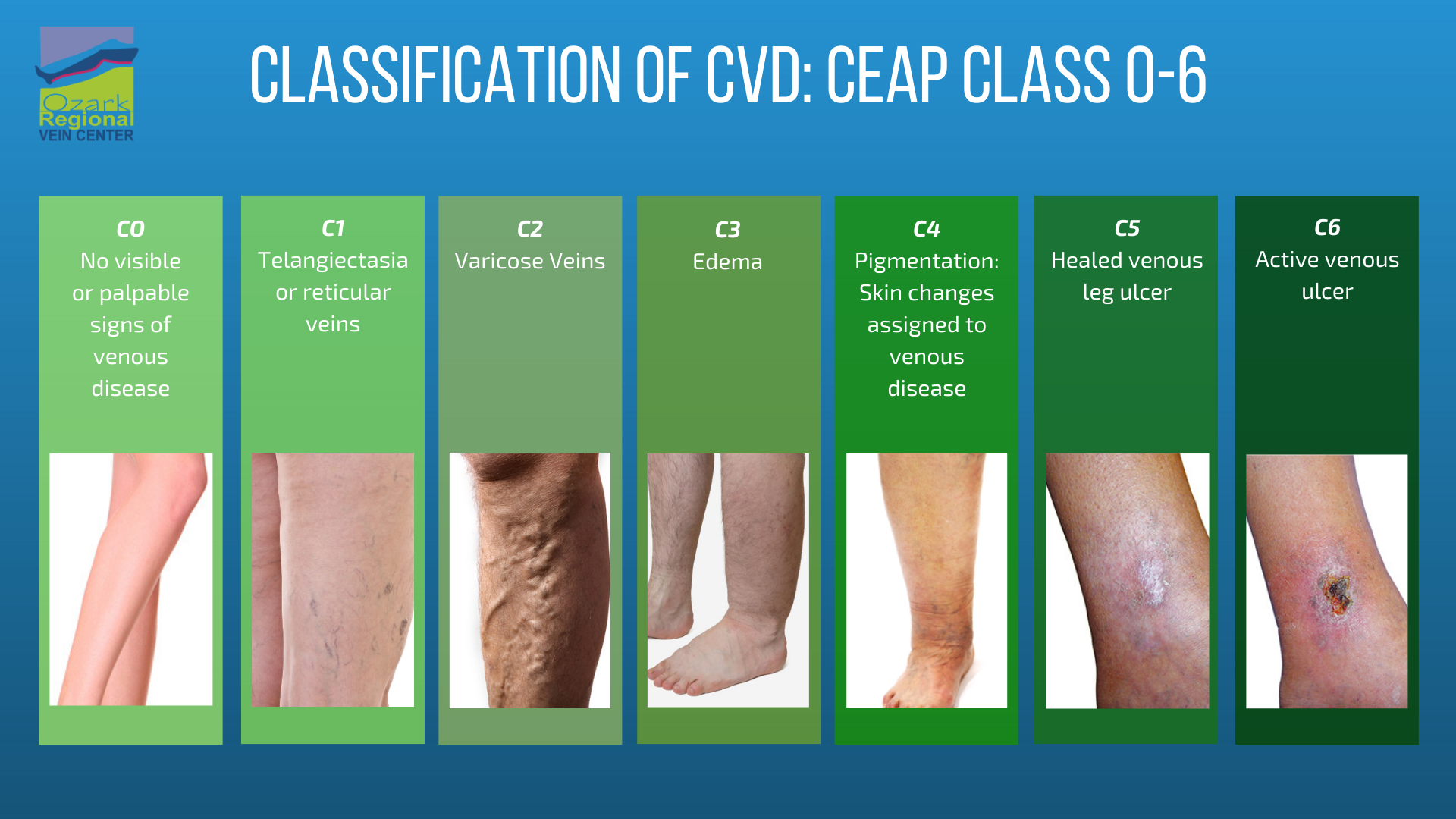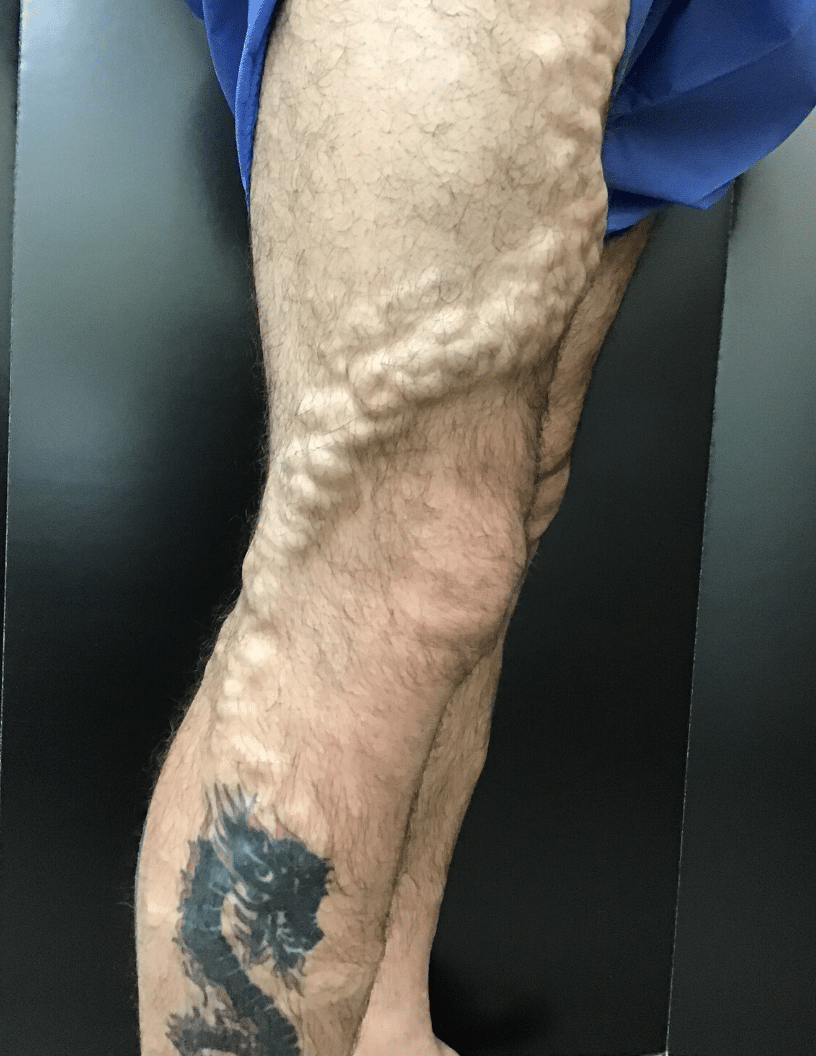One of our areas of pride at Ozark Regional Vein & Artery Center is our ability to educate patients. Besides treating people’s vein issues, we want them to understand the root cause of what’s happening with their bodies. We believe that gaining a better grasp on the “why” leads to more awareness and, therefore, better long-term care.
That’s why we want to dedicate this blog to breaking down the anatomy, physiology, and pathology of your veins. In this post, we’ll discuss your deep and superficial vein systems, as well as the effects that blood flow and oxygen can have on your veins.
As the top vein specialists in Northwest Arkansas, Ozark Regional Vein & Artery Center is adept at helping patients regain their lives. Our combination of knowledgeable experts and advanced technology gives us a unique ability to provide sustainable solutions for your vein issues.
An overview of Venous Reflux Disease
Before we talk about anatomy, let’s first talk about Venous Reflux Disease. Also known as chronic venous insufficiency (CVI), venous reflux disease usually occurs in the legs and can cause noticeable, often painful symptoms. These can include throbbing pain, aching & tenderness, heavy legs, restlessness, discoloration, and more.
Put simply, venous reflux disease occurs when the blood in the veins of your legs is moving backward. This happens when damage occurs to the one-way valves within those veins. There can be several causes for this damage, including natural aging, multiple pregnancies, sedentary lifestyle, genetics, and more.
Eventually, damage to those valves leads to poor blood flow in the legs. This, along with other issues in the legs such as blood clots (also called deep vein thrombosis), can lead to venous reflux. As many as 30 percent of those with deep vein thrombosis develop venous reflux within 10 years.
Because roughly 40 percent of people over the age of 50 have venous reflux disease, it’s important to know the potential root causes. To break it down even further, there are two systems of veins in your body that run parallel to each other: your deep system of veins and superficial system of veins.
Deep & Superficial Vein Systems
You can’t see or feel them, but your deep system of veins is in the muscles of your legs. They have a direct connection to your heart, and keeping them open is essential. Whenever the muscle contracts, it pumps blood to your heart. In terms of your legs, deep veins handle about 90 percent of your blood flow to the heart.
Superficial veins are, essentially, an extra set of veins that are visible to the human eye. They collect blood from both your skin and upper layers in your tissue, but they only provide a minimal amount of blood (roughly 10 percent) to your heart.
The superficial veins are what we’ll treat during your visit to Ozark Regional Vein & Artery Center for venous reflux. The reason we focus on these veins specifically is that we can treat them, and sometimes even remove them if needed. This may sound serious, but it won’t cause any damage to your body.
In terms of issues with your deep and superficial veins, the deep vein issues will be more severe. Phlebitis can occur in your superficial veins without a blood clot. Symptoms will usually be mild in comparison, with the main signs being redness, tenderness, or itchiness at the affected area. With that being said, Phlebitits will keep growing and potentially turn into something more serious if left untreated.
What’s far more dangerous is DVT in the deep vein system. If left untreated, the blood clots from DVT can be potentially lethal. Throbbing leg pain, aches, discoloration, and more are all telltale signs that something is wrong, so please get help immediately if you experience symptoms.
What Blood Does for Your Body
Essentially, your blood should cycle through your body and deposit nutrients and oxygen into your tissue. As we touched on, a lack of oxygen and nutrients, in addition to the pressure caused by backward flow, is the reason a person will experience symptoms of venous reflux.
When you have venous reflux or other vein issues, you have two types of blood competing against each other. You have good blood, which is artery blood filled with the oxygen and nutrients that your heart needs. Then you have bad blood coming from your veins.
This vein blood has already had its oxygen and nutrients sucked out. Over time, that vein blood competing with arterial flow can eventually lead to clots or ulcers (which occur when the blood has no oxygen).
Where our vein experts in Rogers can help patients is by preventing that backward flow of blood and re-routing it. Even with venous reflux, you’ll still have many healthy veins within your legs and your deep system of veins. This helps to alleviate the pressure in your legs and, hopefully, stop the progression of your condition.
Potential Consequences From Lack of Treatment
Failure to treat these issues can cause serious problems. First, we should note that if you feel pain and symptoms in your legs, it’s time to get help. However, the unfortunate reality is that many of the patients we see have already looked for it.
Many patients turn to physicians that don’t specialize in treating veins the way that Ozark Regional Vein & Artery Center does. This lack of expertise leads to inaccurate information and poor treatment recommendations, which causes the issue to get worse.
Without treatment, excruciating pain and other severe symptoms can occur. This can even lead to the need for emergency care because of extreme bleeding in some cases. Unfortunately, by the time that many patients see our staff, their conditions have progressed to the point where they’re dealing with ulcers and open wounds.
Many of these patients are also dealing with discoloration and scarring. Though we can help heal your ulcer, the damage from the scarring will be irreversible by this point. However, we can reduce the chances of further ulcers by roughly 80 percent.
CEAP System
In terms of the severity of your vein issues, there’s actually an official standard of classification used by vein experts across the country. We know this as the CEAP (Classification, Etiology, Anatomy, and Pathophysiology), and it measures classification on a scale of 0-6. The higher the classification, the more severe your venous disease is.
Essentially, C0 and C1 classifications don’t warrant much of a concern. The extent of a C1 classification is usually cosmetic spider veins, which can be hereditary and aren’t covered under insurance. C2 classification is where we get into varicose veins, which is one of the more common treatments we offer at our clinic in Rogers.
In the more advanced level of venous reflux and deep vein issues, you’ll notice severe and even life-threatening symptoms. The C4 classification is when you start seeing skin damage, and C5 and C6 indicate either an active or healed ulcer.
C4 classification is characterized by brown, hard skin. An active ulcer will have those same characteristics, but with a hole in the skin that’s both excruciatingly painful and potentially life-threatening.
The good news is that we can treat these issues, but it’s far more effective if we catch them early. We can still treat the later stages of venous disease, but permanent damage will remain prevalent. For instance, If you allow your severity to get up to a C6 level, the best it can ever be again is a C5 classification. If you get to a C4 classification, it’s always going to be C4 and so forth.

Ozark Regional Vein & Artery Center Offers Unique Specialization
Simply put, we highly encourage you to visit our clinic in Rogers if you’re experiencing leg pain and other venous disease symptoms.
Not only can a visit potentially catch your vein issues early, but the vein screening is also completely free. If we do find deep vein damage or blood that’s flowing in the wrong direction, we’ll evaluate your options and determine a treatment plan from there.
The benefit of receiving treatment with Ozark Regional Vein & Artery Center is that we focus only on vein treatment. Whereas other physicians and practices are more generalized or have other specialties, we completely focus our clinic on veins. This expertise ensures that you’re getting the highest quality care with the most up-to-date technology.
We offer a variety of different treatments for your vein issues, regardless if you suffer from venous reflux, DVT, spider veins, or varicose veins. Our blend of advanced treatment methods and vast experience ensure that you’ll get top-quality care at our clinic.
Learn More About Vein Anatomy, Physiology, & Pathology
Ozark Regional Vein & Artery Center is the only practice in Northwest Arkansas that provides all the highest quality vein treatments available. Dr. Haney and our expert staff have over 75 years of combined experience in the industry, ensuring you get the best leg vein procedures available in Rogers.
We make it our mission to help people overcome their vein issues and live a healthy life. If you have additional questions about the anatomy, physiology, and pathology of your veins, please reach out to us at any time.
Regardless of your issue, we’re capable of providing the guidance you need to look and feel better. Get started today by using our Instant Vein & Artery Screening Quiz or scheduling a consultation.

